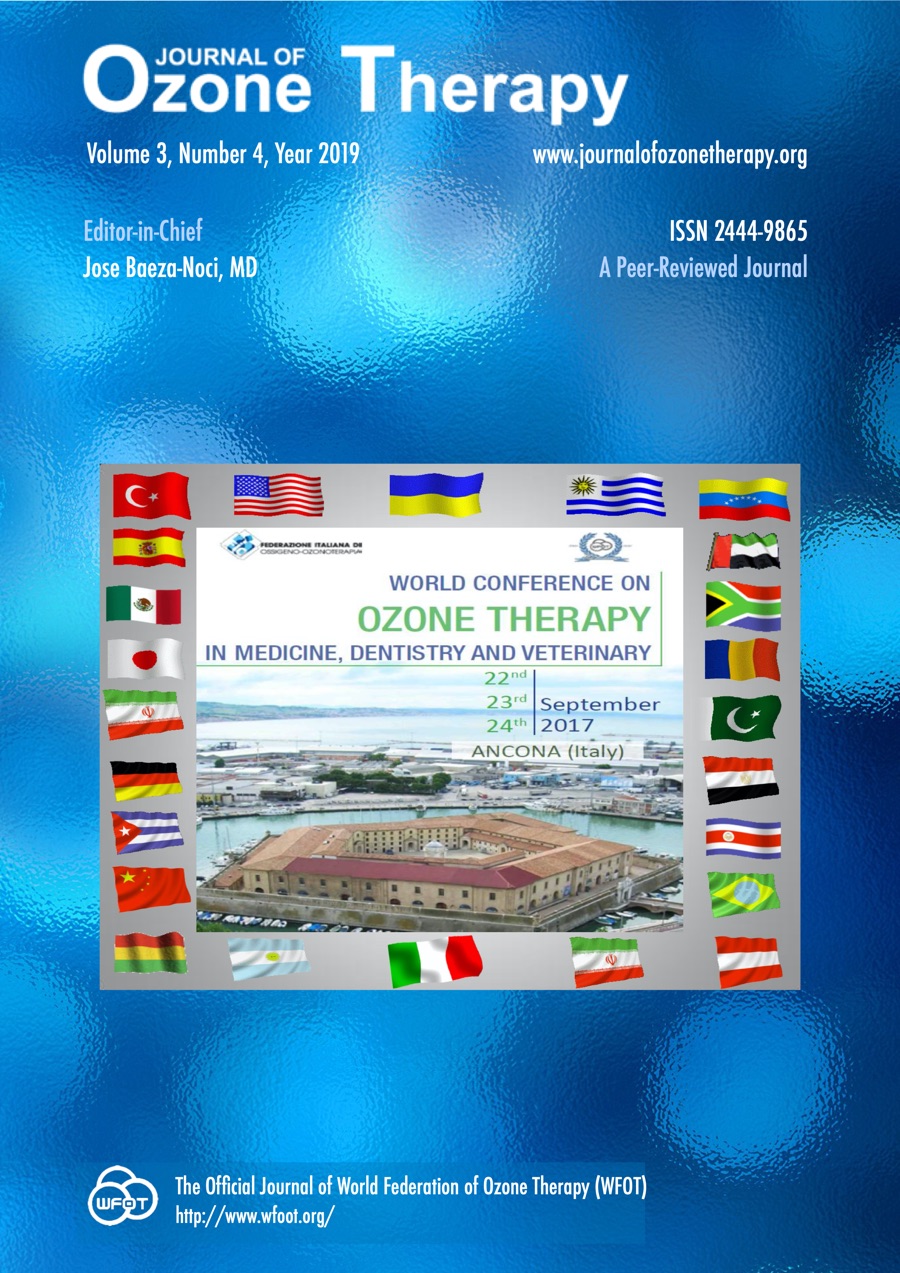Ozone therapy in burns: our experience in Egypt [abstract]
DOI :
https://doi.org/10.7203/jo3t.3.4.2019.15417Mots-clés :
burns, ozone therapy Résumé
Résumé
BACKGROUND: Burn injuries are one of the major health problems all over the world. The problem of infection in burn wounds is considered a major problem and the main cause of death in many burned patients. Ozone has been used with good results in the treatment of patients with diabetic foot, because of its germicidal properties and its influence on the processes of oxygen metabolism, and other effects.
PURPOSE: We report the effect of Ozone therapy on the healing process of recent burns in the Burn unit of the Alexandria Main University Hospital and Plastic Surgery Department Faculty of Medicine, Alexandria University.
Patients and methods: A review of two RCTs of 140 patients with recent burns done to investigate the effects of topical application of ozonized water, ozone gas (Sauna or Bagging), and ozonized olive oil in the treatment of recent burns.
RESULTS: All patients manifested clinical improvement by Topical Ozone therapy. The healing time of the ozone treated wounds was significantly lower than that of the control wounds. The full-thickness infected necrotic wounds that were treated with ozone showed earlier clearance of necrotic tissue and infection than the control wounds and became ready for skin grafting in a significantly lower time than the control wounds. Histopathological studies revealed marked increase in the expression of the fibronectin and transforming growth factor-B after treatment in comparison to the control wounds.
CONCLUSION: Topical application of ozone causes a highly significant reduction in the healing time of the recent burn injuries.
 Téléchargements
Téléchargements
Téléchargements
Publié-e
Comment citer
-
Résumé1340
-
PDF 429
Numéro
Rubrique
Licence
Journal of Ozone Therapy applies the Creative Commons Attribution-NonCommercial 4.0 International License (CC BY NC 4.0) license to works we publish.
Under this license, authors retain ownership of the copyright for their content, but allow anyone to download, reuse, reprint, modify, distribute and/or copy the content as long as the original authors and source are cited. No permission is required from the authors or the publishers.
You may not use the material for commercial purposes.
Appropriate attribution can be provided by simply citing the original article, provide a link to the license, and indicate if changes were made.
You may do so in any reasonable manner, but not in any way that suggests the licensor endorses you or your use.




